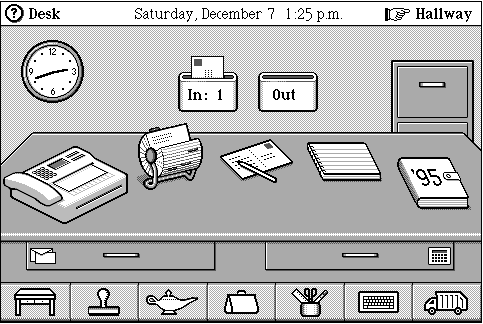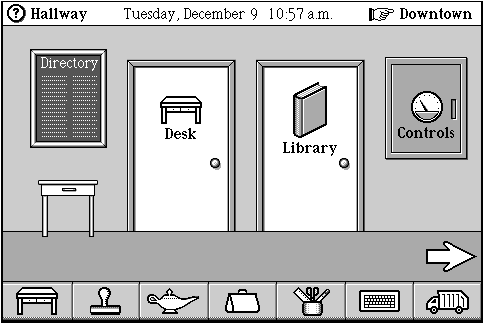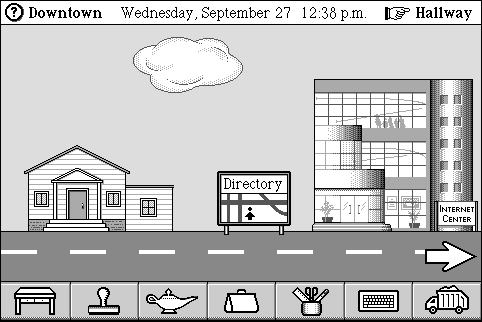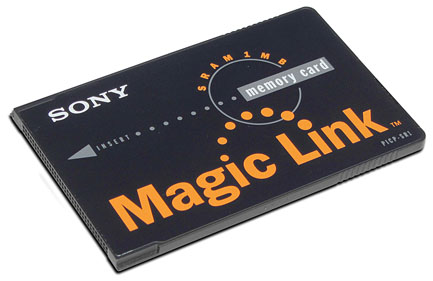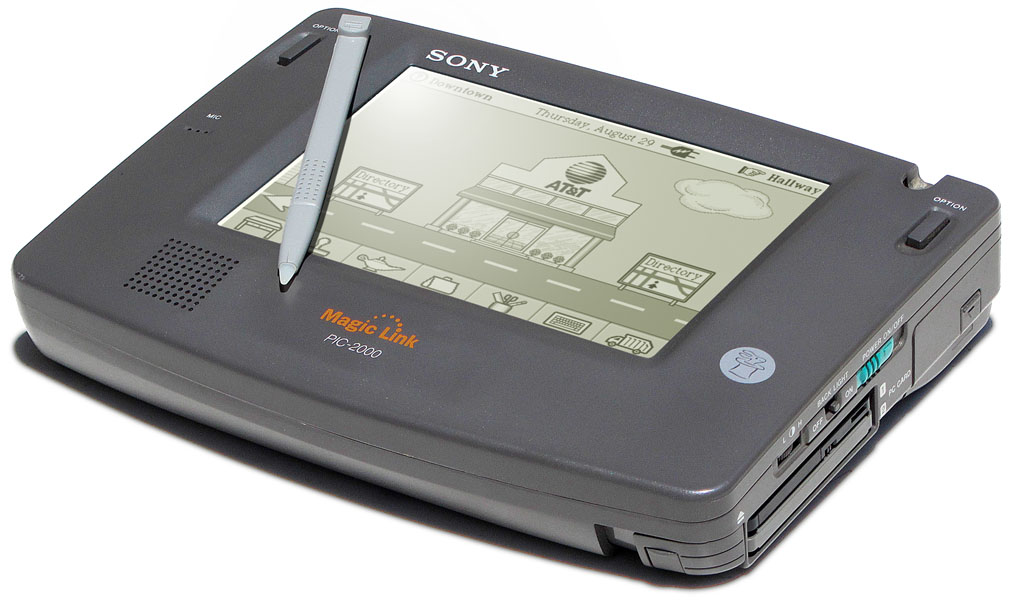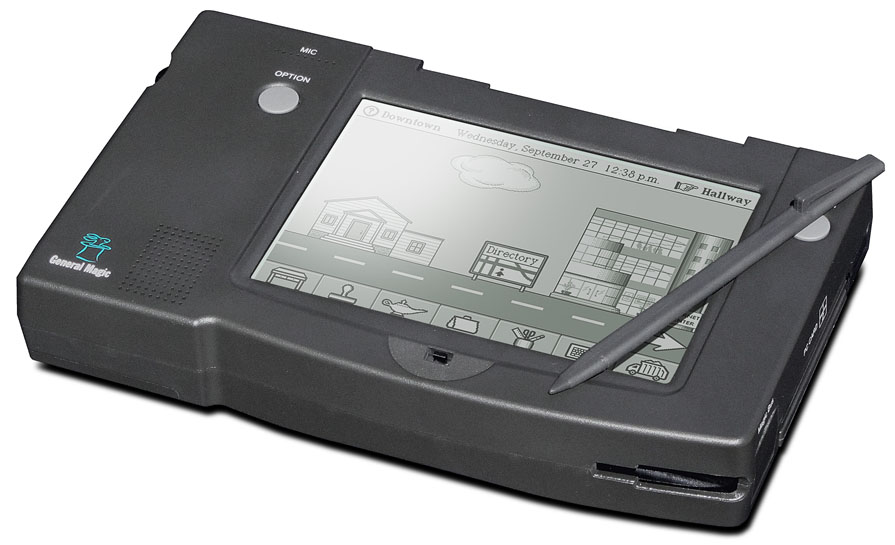| Released: | September 1994 |
| Price: | US$999.95 |
| Size: | 1.5 x 5.5 x 7.5 inches / 40 x 140 x 200 mm |
| Weight: | 1.2 pounds / 550 grams |
| CPU: | Motorola "Dragon" 68349 @ 16MHz |
| Memory: | 4MB ROM, 1MB RAM |
| Display: | 480 x 320 "reflective" LCD, 4 grey levels |
| Comms: | 2400-bps data / 9600-bps fax send modem
38.4-kbps Infrared "beam" |
| Ports: | Magic Port (high-speed serial)
TeleCom headset
RJ-11 telephone |
| Storage: | Battery-backed RAM
optional PCMCIA SRAM card |
| Power: | Six AAA batteries, AC charger
optional rechargeable lithium-ion battery |
| OS: | "Magic Cap" by General Magic |



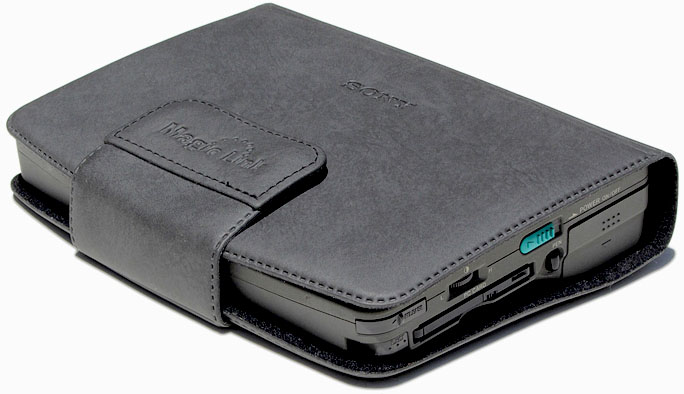
 "There's General Electric, there's General Motors, now there's General Magic. We'll become a household name" they said. After all,
Science fiction author Arthur C. Clarke once stated that
"Any sufficiently advanced technology is indistinguishable from magic."
"There's General Electric, there's General Motors, now there's General Magic. We'll become a household name" they said. After all,
Science fiction author Arthur C. Clarke once stated that
"Any sufficiently advanced technology is indistinguishable from magic."
